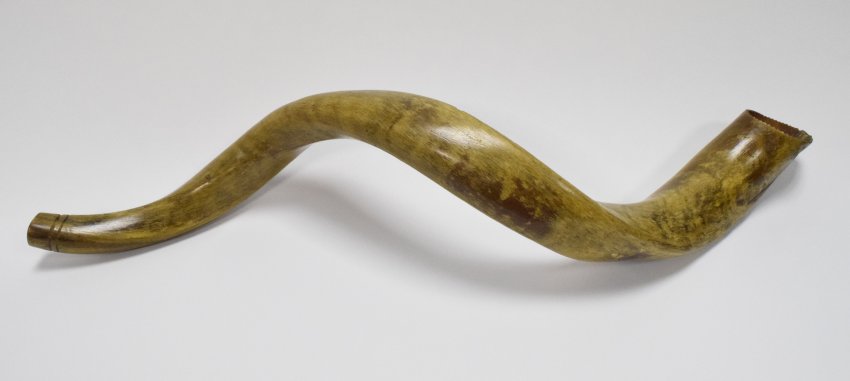Shofar
Central Europe, 19th century
Ram’s horn, l. 26 ¼ x w. 6 ½ in. x h 5 ½ in.
Gift of Joseph B. and Olyn Horwitz
B’nai B’rith Klutnick National Jewish Museum Collection, 2015.17.263
A shofar is an instrument made from the horn of a ram or other kosher animal. It was used in ancient Israel to announce the New Moon (Rosh Hodesh) and call people together. It was also blown on Rosh Hashanah, marking the beginning of the New Year, signifying both need to wake up to the call to repentance, and in connection with the portion read on the second day of Rosh Hashanah, the Binding of Isaac (Genesis, chapter 22) in which Abraham sacrifices a ram in place of his son, Isaac. Today, the shofar is featured most prominently in the Rosh Hashanah morning services. It is considered a commandment to hear the shofar blown. The shofar must be an instrument in its natural form and naturally hollow. The most desirable shofar is the bent horn of a ram. The curve in the horn mirrors the contrition of the one who repents.
This shofar was presented to collector Joseph Horwitz by the Jewish community of Bombay. Its twisted form is traditional with Jews from India.
Publications:
In the Spirit of Tradition: The B’nai B’rith Klutznick Museum, ed. Linda Altshuler, 1988, p. 79, no. 90, ill. p. 42-43.

